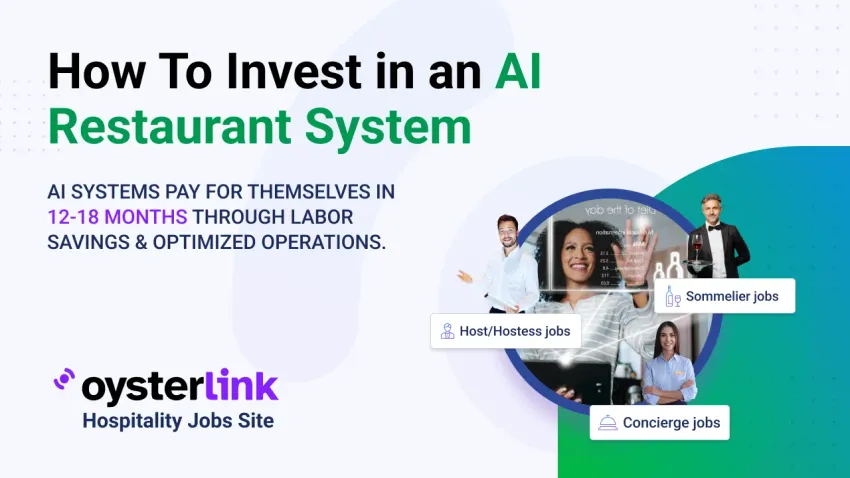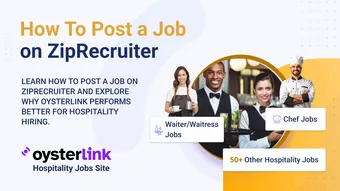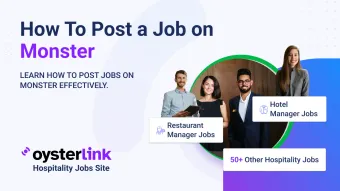AI restaurant systems are transforming how kitchens operate, front-of-house runs, and profits grow - here's why smart operators are investing now.
The Role of AI Restaurant Systems in Modern Operations
AI restaurant systems automate the grunt work in your operation using smart algorithms that learn your patterns—and as the chart below shows, adoption is skyrocketing.
How Restaurant Automation Enhances Operational Efficiency
Today's AI restaurant systems are designed to work with the tools you already use:
- Point-of-sale (POS) system
- Kitchen printers
- Scheduling apps (like 7shifts or Homebase)
- Accounting platforms (like QuickBooks or Xero)
It’s built to work with you, not against you
Most modern AI tools are designed for plug-and-play compatibility—meaning they connect with your current software and hardware without needing to start over.
For example, Toast’s POS and Square for Restaurants now offer AI features that automatically track sales trends and predict your inventory needs.
Easy for your team, powerful for your business
The idea of “AI” might sound intimidating at first, but onboarding today is shockingly smooth. Most vendors offer:
- One-click integrations with the tools you already use
- Cloud-based dashboards you can access from your phone
- Training videos, cheat sheets and live support
Real benefits you’ll actually notice
When your POS, inventory and scheduling apps start “talking” to each other via AI, the results are immediate:
- You’ll stop over-ordering and wasting food
- You’ll stop scrambling to fill shifts last minute
- You’ll actually understand what’s driving your busiest nights
 (3).webp)
AI doesn’t replace your systems. It supercharges them
By integrating directly with your existing tools, AI eliminates busywork, unlocks real-time insights and sharpens service without disrupting your flow.
It’s not replacing the human touch, it’s empowering your team to focus on what matters most: creating exceptional guest experiences.
Streamlining Kitchen Operations with AI Restaurant Systems
This 90-day plan is designed for real restaurants with real demands, allowing you to start small, move fast and see measurable results without disrupting service.
Days 1-30: Foundation
- Audit current systems
- Pick one focus area
- Integrate AI with existing POS
Days 31-60: Learning
- AI observes your operations
- System learns your patterns
- Train staff on new tools
Days 61-90: Full Launch
- Activate predictive analytics
- Turn on automated ordering
- Review performance vs. baseline
 (4) (1).webp)
AI Restaurant System ROI: What You Can Expect
With low upfront barriers and high operational impact, modern AI systems pay for themselves quickly.
Initial Investment
Setup costs are minimal since most systems integrate with existing hardware. You might need a few additional tablets or sensors, but major equipment purchases aren't necessary.
Measurable Returns Within 6 Months
- Labor cost reduction
- Food waste reduction
- Revenue increase
- Operational efficiency
Beyond immediate cost savings, AI provides sustainable competitive advantages that compound over time.
You'll develop deeper guest relationships, more efficient operations and better decision-making capabilities that set you apart from competitors.
Common AI Restaurant System Objections
Most concerns come from outdated assumptions, not the reality of how today’s AI actually works.
"My staff will resist the technology"
Modern restaurant AI is designed for the real world, not Silicon Valley offices. If your team can use tablets, they can work with AI.
Most resistance disappears when staff see how AI eliminates their most frustrating tasks, like for example manual inventory counts.
"What if the system goes down?"
Reputable AI providers build redundancy into their systems. Cloud-based solutions mean if one server fails, others take over automatically.
The reliability risk is actually lower than traditional systems because everything is monitored and maintained by specialists.
"I don't want to lose the personal touch"
When your Servers know a guest's favorite wine or dietary restrictions without asking, that's more personal, not less.
When your kitchen runs smoothly because inventory is perfectly managed, your Chef can focus on creativity instead of counting boxes.
"The costs will spiral out of control"
Most AI restaurant systems have transparent, predictable pricing. Monthly subscriptions mean no surprise charges and you can typically scale features up or down based on your needs.
Getting Started with an AI Restaurant System
- Begin by documenting the systems you already use: your POS, scheduling, inventory and accounting tools.
- From there, identify the one area in your operations that causes the most frustration or waste - that’s your best starting point.
- Once you find a system that fits, roll it out in that one area first.
- If it performs well, scaling up becomes a natural next step.
Ready to level up your job hunt? See how AI can give you the edge you need. Read: 5 Ways AI Can Help You Land Your Next Job









Loading comments...